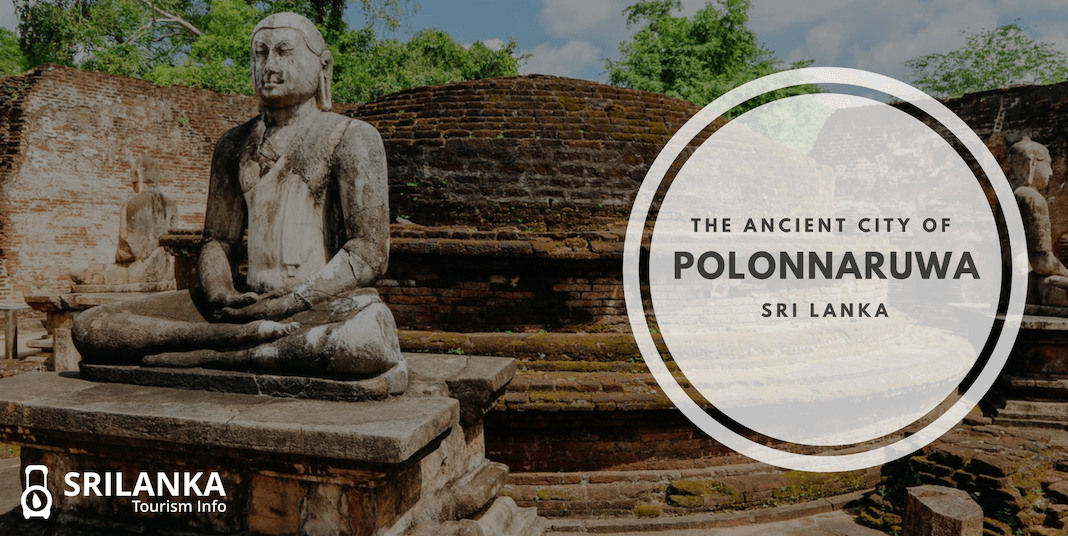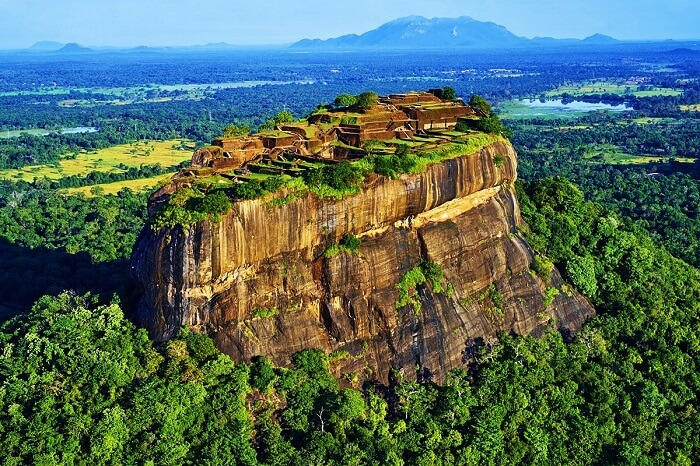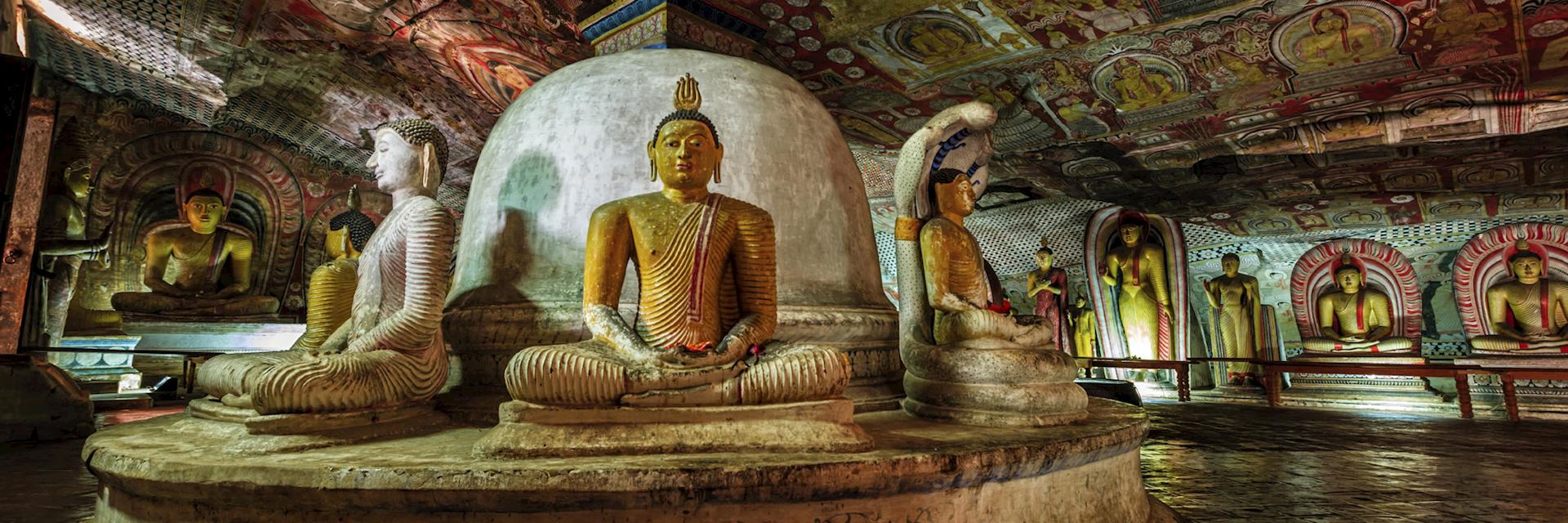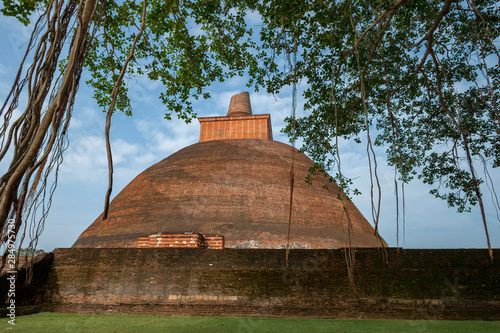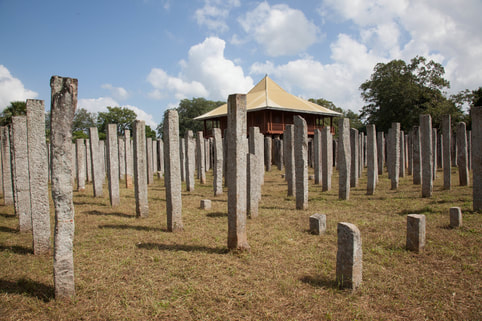10 BEST HISTORICAL PLACES IN SRI LANKA
10 BEST HISTORICAL PLACES IN SRI LANKA
Nestled within the Indian
Ocean, the island of Sri Lanka boasts a documented history of over 3,000 years
to explore. Sri Lanka’s location has made it strategically important from the
earliest days of the ancient Silk Road trade route right up to today’s
so-called maritime Silk Road.
Beyond its rich history of
trade, many of Sri Lanka’s incredible historic sites reflect the island’s
Buddhist heritage, as well as the legacies of vast and powerful kingdoms from
the Anadhurapura and Sinhalese periods.
So what are you waiting
for? From the Temple of the Tooth to the Dambulla Cave Temple, these are our 10
best historic sites of Sri Lanka.
1.Polonnaruwa
Polonnaruwa was the second capital of Sri Lanka after the destruction of Anuradhapura in 993. It comprises, besides the Brahmanic monuments built by the Cholas, the monumental ruins of the fabulous garden-city created by Parakramabahu I in the 12th century.
Polonnaruwa history
Polonnaruwa was initially a temporary royal residence. However,
in the late 10th century, it became a capital city of Sri Lanka after the ancient capital of Anuradhapura was conquered and
destroyed by King Chola Rajaraja I. The Chola dynasty favoured Polonnaruwa over
Anuradhapura as it was thought to be easier to defend.
Despite this reasoning, in 1070, King Vijayabahu I of the
Sinhalese kingdom conquered Polonnaruwa and made it his capital, exiling the
Cholas. Vijayabahu set about adorning Polonnaruwa with Buddhist monuments, as
opposed to the Brahmanist monuments of the Chola dynasty.
Overall, Polonnaruwa would remain the capital for three
centuries, with the 12th century seeing a mass building project undertaken
under King Parakramabahu I.
Parakramabahu constructed beautiful palaces, monuments, parks
and gardens. The well-preserved ruins of many of the structures built during
this time can be seen at Polonnaruwa today, such as its star attraction, the
collection of vast Buddha sculptures known as the Gal Vihara.
Another monument created under Parakramabahu is the Lankatilaka,
a grand sacred structure known as a “GEDIGE” which houses a large headless
Buddha statue.
2. Anuradhapura
Anuradhapura is a sacred ancient city in Sri Lanka founded in the 4th century BC, whose beautiful ruins are now a UNESCO World Heritage Site. Over time, Anuradhapura became one of the great capitals of Sri Lanka (then called Ceylon), garnering both political and religious significance.
Anuradhapura history
The 3rd century BC saw Anuradhapura grow in importance for the
Buddhist faith. In around 250 BC, Anuradhapura gained its first Buddhist
sovereign, Tissa, and in the same century, the city was gifted a highly sacred
object in the shape of a tree cutting.
The fig tree from which the cutting originated is believed to be
the same one under which Siddharta- the founder of Buddhism -became
enlightened.
The kings of Anuradhapura ruled for centuries, establishing a
series of impressive monuments, from palaces and monasteries to sculptures and
dagobas. However, the city suffered numerous attacks by the Tamils, Pandyas and
Cholas. The final blow occurred in around 993 AD with an attack by King Chola
Rajaraja I, after which Anuradhapura was abandoned in favour of Polonnaruwa.
3.Temple of the Tooth
History of the Temple of the Tooth
The subject of fierce fighting, it is said that the tooth – one
of the Buddha’s teeth and therefore one of the most important Buddhist relics –
was first brought to Sri Lanka in the 4th century AD and has been part of the
politics of the local region ever since. Legend has it that whoever owns the
tooth has governance over the local area. However, the Temple of the Tooth
itself was first built in 1603, with the current temple dating back to the 18th
century.
The Temple of the Tooth was part of Kandy, a royal city founded
in the 14th century that became the capital in the 16th century. Subject to
various colonial invasions, Kandy fell to the British in 1815. The Royal City
of Kandy is a UNESCO World Heritage site. The temple was damaged by militant
organisations in the late 20th century, but was rebuilt extensively both times.
4.Sigiriya
Sigiriya history
Comprised of a vast red rock mound rising over 660 feet, it is
thought that Sigiriya (meaning “Lion Rock”) was originally inhabited during the
3rd century BC, when a Buddhist monastery was founded there.
In the 5th century AD, it is thought that Sigiriya’s use changed
from a sacred site to a royal one. It is said that, having assassinated his
father King Dhatusena and taken the throne, King Kashyapa I of the Anuradhapura
Kingdom sought an easily defensible place to build his palace, and that he
chose to construct it atop Sigiriya.
In the late 5th century, Kashyapa was defeated in battle and
Sigiriya once again became a Buddhist monastery, eventually falling into
decline.
5. Dambulla Cave Temple
History of The Dambulla Cave Temple
The Dambulla Cave Temple is also known as the Golden Temple of
Dambulla. It is the largest and best-preserved cave temple complex in the
country, with the rock towering 160m over the surrounding plains. Inhabited
since prehistoric times, it was in the 3rd century BC that a monastery was
initially constructed at Dambulla.
In the 1st century AD, the caves began to be transformed into
shrines, which continued into the 18th century. Most of the building work was
carried out during the Anuradhapura (1st century BC to 993 AD) and Polonnaruwa times
(1073 to 1250 AD).
During the 18th century, the temples were restored and painted
by the Kingdom of Kandy. These paintings cover the the rock ceilings, which are
decorated with intricate religious images which follow the contours of the
rock.
In 1938, the architecture was embellished with gabled entrances
and arched colonnades.
There are over 80 documented caves in the surrounding area;
however, major attractions are spread over 5 caves, which contain statues and
paintings. The largest and grandest of the caves is the second one, known as
Maharaja Vihara.
Since 1991, the Dambulla Cave Temple has been a UNESCO World
Heritage site.
6.Ruwanwelisaya Dagoba
The Ruwanwelisaya Dagoba, or the Great Stupa, is a magnificent
Buddhist sacred site in the ancient city of Anuradhapura in Sri
Lanka. Today, the Ruwanwelisaya Dagoba is the most prominent of the
“Atamasthana”, the 8 holy places Buddhists should visit on pilgrimage to
Anuradhapura, UNESCO World Heritage Site.
Ruwanwelisaya Dagoba history
The Ruwanwelisaya Dagoba was built in 140 BC by King Dutugemunu,
who later became King of all Sri Lanka after defeating the Chola King, Ellalan.
Dutugamunu was king of the Anuradhapura Kingdom, and reigned from 161 to 137
BC, expanding the city of Anuradhapura to project the power of Sinhalese
culture across Sri Lanka.
The stupa was constructed in a hemispherical shape, its purpose
to hold the relics of the Gothama Buddha. However, King Dutugemunu died before
its completion, his brother Saddhatissa ascending the throne.
The stupa was a ruin by the 19th century, having been overgrown
with new forestry. Yet after meticulous fundraising efforts by a Sinhalese
bhikkhu, male Buddhist monks, it was renovated in the early 20th century. Foundations were
laid in 1902 and the stupa was crowned in June 1940.
The design of the stupa was designed to reflect the teachings of
Buddha: the dome representing the vastness of doctrine, the four facets
signifying the Four Noble Truths, concentric rings highlighting the Noble
Eightfold Middle Path, and a large crystal on top represents the goal of
Buddhist enlightenment.
7. Jetavanarama Dagoba
The Jetavanarama Dagoba is a vast Buddhist shrine, and at the
time of building was the third tallest monument in the world. The stupa is
located in the ancient city of Anuradhapura in Sri Lanka and is
believed to hold part of a sash worn by Buddha.
With its huge dome and reddish-copper hue – accounted for by the
millions of burnt bricks used to build it – Jetavanarama Dagoba remains an
incredible structure.
Jetavanarama Dagoba history
When he was consecrated as King in the 3rd century AD, Marsahena
of Anuradhapura brought about a campaign against the Orthodox
Theravadins sect of Buddhist teaching, who dwelled in the Mahavihara – a large
Buddhist monastery. The differences between the two Buddhist cultures escalated
into penalties for those aiding monks dwelling in Mahavihara, which was
eventually abandoned.
The monks moved to Malaya Rata and Ruhuna, with Mahavihara being
pillaged, provoking a rebellion by a minister against King Mahasena who met the
rebels with an army. Negotiations were fruitful and the king agreed to
build a vihara for the monks to return to, marking the beginning of
constructing Jetavanaramaya.
The foundations were laid on bedrock, stamped down by elephant
feet, and the dome was built from strong sand bricks. The stupa was then
covered in lime plaster. Overall, the process took around 15 years to complete
and required skillful brick workers, layers and stonemasons.
Until 1909, the colossal stupa was covered in jungle. It was
then that Monk Jumbuke Dhammarama gained approval to clear the building.
Excavations revealed that Sri Lanka was the primary location for trade activity
connecting the Indian rim countries with the Mediterranean and the Far East.
8. Sri Maha Bodhi Tree
The Sri Maha Bodhi Tree in Sri lanka is one of Anuradhapura’s most important Buddhist sites and is a sacred place of pilgrimage. It is thought the tree grew from a cutting of the fig tree under which Buddha gained enlightenment, making the tree almost 2,000 years old. Pilgrims continue to flock to see the Sri Maha Bodhi Tree.
Sri Maha Bodhi Tree history
In the 3rd century BC,
the Sri Maha Bodhi Tree was brought to Sri Lanka by Sangamitta Theri, daughter
of Indian Emperor Ashoka. The bodhi tree she brought to Sri Lanka
originated from the Bodhi Fig Tree located in Bodh Gaya in India. This tree was
sacred because the Buddha, Siddhartha Gautama, was said to have reached
enlightenment under a tree in the same place around 500 BC.
In 288 BC the tree
at Anuradhapura, a cutting of its Bodh Gaya parent, was planted by King
Devanampiya Tissa on a high terrace about 6.5 metres about the ground.
Devanampiya Tissa was one of Sri Lanka’s early kings based at Anuradhapura, and
was noted for the rise of Buddhism in Sri Lanka after it was brought over by
the Emperor Ashoka.
The site of the Sri
Maha Bodhi Tree was developed by successive kings: Vasabha in the 1st century
AD placed 4 Buddha statues around the tree; Voharika Tissa in the 3rd century
AD added metallic statues; Mahanaga in the 6th century constructed a water canal
and the present wall was built by Thero under King Kirti Sri Rajasinha’s reign
in the 18th century. The tree was therefore protected by wild elephants and
constantly watered.
The tree lost two branches to storms in 1907 and 1911, as well as having one stolen in 1929. In 1985, during Sri Lanka’s civil war, the sacred site also witnessed the massacre of Sinhalese-Buddhists by the Liberation Tigers of Tamil Ealam in what is known as the Anuradhapura Massacre.
9. Brazen Palace
The Brazen Palace (Lovamahapaya) in Anuradhapura was once a
magnificent structure initially built during the reign of King Dutugemunu of
Sri Lanka (161BC-137BC).
Rebuilt on several occasions, at its peak, it would have had
over a thousand rooms and would have risen nine storeys.
Today, the sole remains of the Brazen Palace are 1,600 neatly aligned granite columns arranged in forty rows.
Brazen Palace history
Lovamahapaya in Anuradhapura is known as The Brazen Palace, due
to the bronze tiled roof it once featured. It was originally built by King
Dutugemunu more than 2000 years ago and is thought to have had nice storeys to
provide accommodation for up to 1000 monks and attendants.
Whilst the Jetavanaramaya, Abhayagiriya and Ruwanwelisaya in
Anuradhapura were taller structures when they were built, the Brazan Palace
remained the tallest building on the island for over a millennium between 155BC
and 993A.
The building once featured what was known as a “simamalake”, which is where the Buddhist community gathered on days of the Full Moon, to recite passages from Buddhist scripture. It was completely razed to the ground by fire during the rule of King Saddhatissa. The temple was reconstructed under the leadership of King Parakramabahu.
10. Lankatilaka Vihara
Lankatilaka Vihara is an ancient and sacred Buddhist temple
known as a ‘GEDIGE’ in the medieval city of Polonnaruwa, Sri Lanka. One
impressive sculpture of Buddha remains in the ruins of Lankatilaka, albeit
without its head.
The Lankatilaka Vihara is believed to have been built during the reign of Parakramabahu (1153-1186) and to have been restored by Vijayabahu IV (1513-21).
History of Lankatilaka Vihara
The temple is in the Hiyarapitiya village, from the Udu Nuwara
area of Kandy district in Sri Lanka. It is wisely considered to be the
most magnificent architectural building created during the Gampola era.
The history of the temple dates back to the 14th century.
Historical reports state that the Gampola King Bhuvanekabahu IV, who reigned
from 1341 to 1351 AD, built the temple.
The architect, Sathapati Rayar, designed the temple using
Sinhalese architecture of the Polonnaruwa era and also with other Dravidian
(Indian) and Indo-Chinese architectural patterns.
The temple is located on a natural rock on a granite-based
foundation. It possesses outstanding architectural features, and is embellished
with traditional Sinhalese sculptures. Originally, the temple would have been
four stories and 80ft high, but today only three stories remain.
Beautiful arches and sculptures enhance the thick outer walls,
with many inscriptions in both Sinhala and Tamil cut into the solid rock
describing the facilities provided to the temple and the land gifted by kings
who ruled then.
